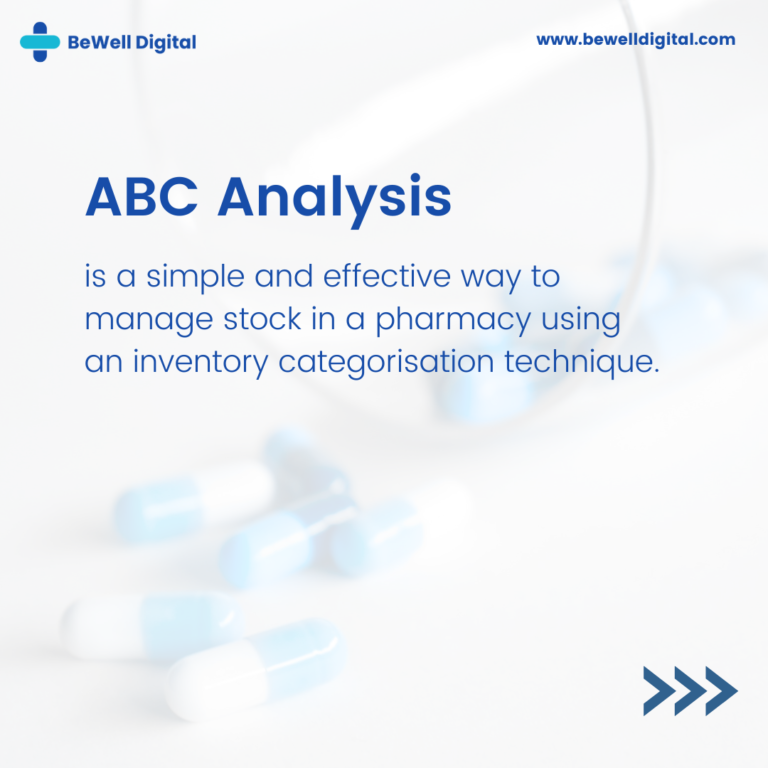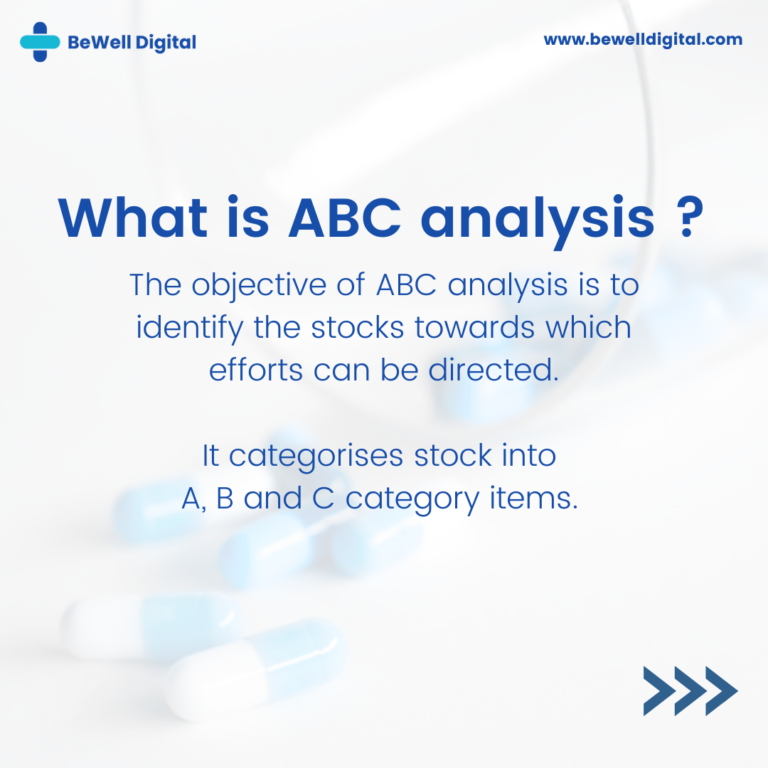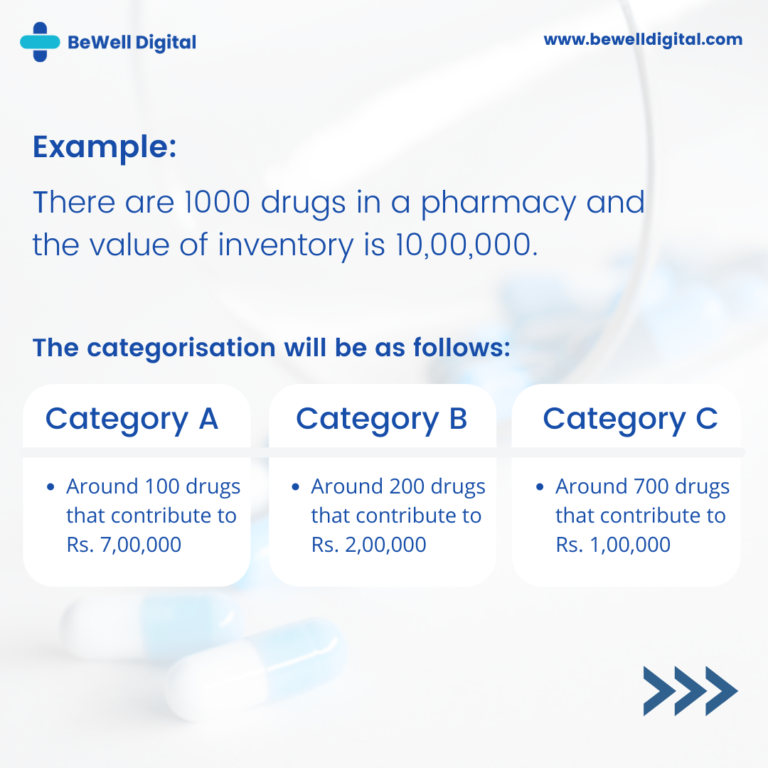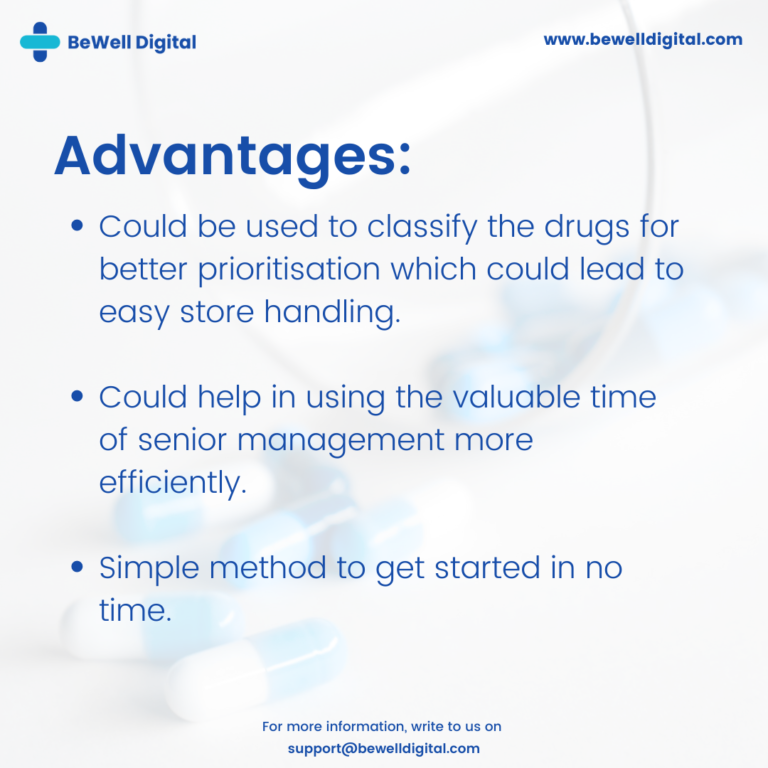Simple method to reduce losses in Pharmacy
Consider your last-minute preparation for exams. How will you prepare? Will you give the same importance to all the questions or will you give more priority to certain questions that are likely to appear?
This forms the essence of ABC Analysis.
Pharmacy involves hundreds of stocks and it is not feasible to have strict control over all the items because of the lack of time and also because of the fact that it does not provide the right return on investment beyond a point. On the other hand, not exercising the right control over all the items could result in a shortage of inventory or excess inventory resulting in blocking of the capital.
The ideal situation lies in between. ABC Analysis does not let you have light control over all items but will enable you to exercise light control over selected items. The bedrock of ABC Analysis is that some items are far more important than many.






The objective of ABC analysis is to identify the stocks towards which efforts can be directed. ABC Analysis is a segregation process through which we categorise the items as A items, B items, and C items.
- Category A Items – Items that are expensive are branded as A items and they generally constitute 10% of overall items but its percentage in terms of value is around 70%.
- Category B Items – Everything in between A and C are categorised as B items whose number of items will be around 20% of the total value.
- Category C Items – The least expensive items are branded as C items which contribute to 10% of values while it constitutes to 70% of sales.
For example, there are 1000 drugs in a pharmacy and the value of inventory is 10,00,000 then we would need to categorise the drugs into the following
- Category A – Around 100 drugs that contribute to Rs. 7,00,000
- Category B – Around 200 drugs that contribute to Rs. 2,00,000
- Category C – Around 700 drugs that contribute to Rs 1,00,000
Once the categorisation is done, we need to follow the following to have tighter control.
Category A | Category C |
|
|
|
|
|
|
|
|
Category B:
For category B items, the treatment is in between A and C. The accounting for category B stocks is spread over a longer time period. The manual efforts that go into planning are also reduced.
Advantages of ABC Analysis
ABC analysis offers a few important advantages :
- Could be used to classify the drugs for better prioritisation which could lead to easy store handling.
- Could help in using the valuable time of senior management more efficiently.
- Simple method to get started in no time.
The only disadvantage with ABC Analysis is that it does not take into account the factors such as expiry date and the pace of drug movement.
In summary, ABC analysis is the process of classifying items by using value as an important measure. Its main objective is to frame policy guidelines regarding control of items.BeWell Digital’s Hospital software comes with an inherent techniquest to have a deeper control over the stock. It is one of the ways to avoid losses in a pharmacy.
Read more about Revenue losses in a pharmacy and how to avoid it.
Get in touch with us today on support@bewelldigital.com to request a trial of our Pharmacy software.
Follow us on
About Author

Alagiri Senthilkumar is the CEO & CoFounder of BeWell Digital. Alagiri is passionate about digitising patient information as he strongly believes that this could remarkably change the way healthcare is approached. Prior to BeWell Digital, Alagiri was part of a product manager at a rocket ship startup and has also consulted Fortune 500 companies on Data, Analytics, and AI.
Contact
BeWell Digital Technologies Pvt.Ltd.,
Layout, Ashok Nagar, Bengaluru,
Karnataka 560025, India.
Follow Us
Copyright © 2022 BeWell Digital

